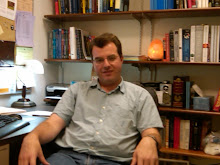Newton's Principia is not for the faint of heart. His methods, being based entirely on geometric proofs rather than algebraic derivations, are unfamiliar to the modern physicist, and by some accounts were done at a sufficiently elevated level that even his contemporaries (better-versed in Euclidean geometry than the typical 21st century physicist). By section 3 I was just skimming the proofs and mostly just reading the propositions to see what conclusions he reached. Section 3 is one of the keys (the others being sections 11 and 12, as you'll see), since he proves that conic trajectories imply inverse square potentials.
Then it gets very technical: Sections 4 and 5 amounted to finding orbits from a few points, which amounts to interpolating conics. Section 6 is a bit more interesting, finding position as a function of time (as opposed to just orbital shape) via clever use of Kepler's law of equal areas in equal times. Section 7 involves falling bodies in central potentials. Section 9 involves precessing orbits. Section 10 involves objects on curved surfaces, and also pendula. Alas, all of the methods here are impenetrable.
Section 11 is interesting. He discusses how to convert 2-body problems into 1-body problems, justifying the application of his previous results (on 1-body problems) to real systems. Then he takes on the 3-body problem. Given the difficulty of the problem he isn't able to do much with the gravitational problem, but he does prove some interesting results for the n-body system of particles interacting via 2-body forces proportional to the products of particle masses and the separation vector between the particles. Basically it's a system of masses and springs and it's completely solvable. So, like any physicist, Newton derived results for masses and springs because that's what he could do. Don't feel bad, Isaac, we have mostly done the same in the centuries since.
When he gets to the 3-body gravitational potential, he argues ("proves" is too strong of a term) that if one mass is far larger than the rest you can ignore the interactions of the other two bodies with each other, or the way that they perturb the motion of the larger body. After that, he argues that his methods can be applied to a 3-body system that bears a remarkable resemblance to the sun, earth, and moon. However, he kept it quite abstract, deferring an open mapping to the sun/earth/moon system until Book 3. According to the commentary by the translator, the reason was that Newton's contemporaries were critical of the idea of mysterious attraction at a distance.
In section 12 he proves that for gravitational interactions spheres can be treated as point objects. In section 13 he considers a point interacting with a surface if the particle-particle interactions are something other than 1/r^2. He derives a lot of results that would not be out of place in a modern text on intermolecular forces.
Section 14, the last section of Book 1, involves small particles moving in stratified media with piecewise-linear potentials. What he is doing bears a remarkable resemblance to ion optics (which I spent some time working with in college) but he wants to derive the optics of light. It's a precursor to his book Opticks.
I'm not going to read books II and III. Book II is chock full of wrong results and Book III just doesn't interest me because the essential result is already present.
Still, although I wound up skimming a third of it rather than reading the whole thing carefully I am glad that I read it. I hope to teach my department's class on the history of physics in a few years, and having at least surveyed Newton is useful. More importantly, I want to focus on the topic of relative motion, and Newton's most important arguments there concern the spinning bucket, which is in an early section that I actually read. The bucket argument influenced Mach and Einstein, so it's essential to the course that I would like to teach.
Friday, July 22, 2016
Newton defeats me
Subscribe to:
Post Comments (Atom)



No comments:
Post a Comment